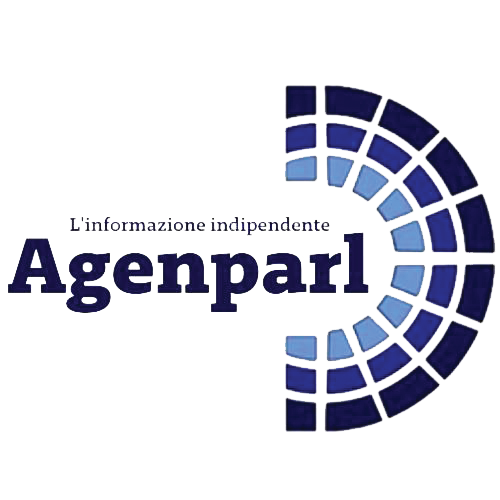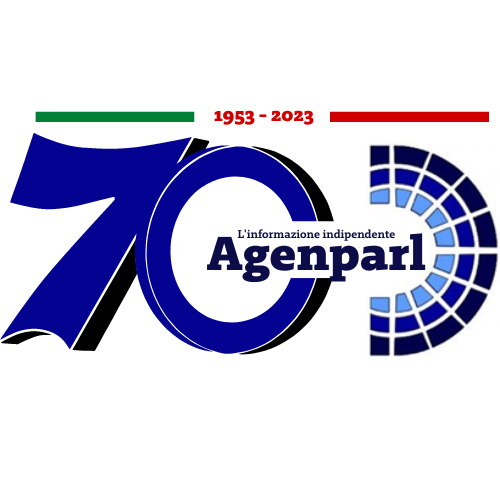 (AGENPARL) - Roma, 5 Settembre 2025
(AGENPARL) - Roma, 5 Settembre 2025(AGENPARL) – Fri 05 September 2025 A weekly compendium of media reports on science and technology achievements
at Lawrence Livermore National Laboratory. Though the Laboratory reviews
items for overall accuracy, the reporting organizations are responsible for
the content in the links below.
LLNL Report, Sept. 5, 2025
More than 3,200 LLNL employees participated in the first-ever aiEDGE for
Innovation Day— an event aimed at empowering and equipping the Lab’s
workforce to integrate AI into their daily work. (Photo: Blaise Douros/LLNL)
All in on AI
Nuclear weapons risk analysis, procurement and more: How two national labs are going ‘all in’ on AI
Several of the 17 DOE-run national laboratories appear poised to level up on
AI in the years ahead.
Mark Pettit, principal deputy chief information officer at Lawrence Livermore
National Laboratory in California, said during a FedInsider virtual event
this week that he has to “temper myself in the hype around AI” as his
facility goes “all in” on the emerging technology.
Livermore’s proximity to Silicon Valley has allowed the lab to bring in
some of the country’s top AI thought leaders to speak to staffers about the
tech’s best uses. There’s a lab-wide initiative called “AI edge” to
upskill the entire workforce, which includes skill assessments and customized
learning tracks. And the lab is getting creative on how to keep workers
engaged.
“We use gamification of learning to encourage people to actually upskill
themselves,” Pettit said. “We’ve got a lot of advancement and adoption
because of that. We have communities that we’ve built online that share
best practices and success stories so people can learn from each other’s
uses as well as their failures, and then we host a series of special
speakers.”
Read More
Nuclear weapons risk analysis, procurement and more: How two national labs are going ‘all in’ on AI
Inertia is led by Twilio co-founder Jeff Lawson, fusion power plant designer
Mike Dunne and Annie Kritcher (shown), who led the LLNL team at the National
Ignition Facility in reaching the milestone three years ago. (Photo: Blaise
Douros/LLNL)
Time to shine
https://www.eenews.net/articles/fusion-cash-is-everywhere-is-a-breakthrough-coming/
Fusion energy is having a moment.
Last week, Commonwealth Fusion Energy Systems, which is backed by Google,
announced it had raised nearly $3 billion in capital and would start
developing a fusion power plant in Virginia. That came as a prominent
Department of Energy scientist helped launch a new company to commercialize
fusion.
The Nuclear Regulatory Commission, meanwhile, is planning to release a new
rule this fall to develop fusion energy as investors pour unprecedented
amounts of money into startups.
The moves raise a central question for the future of the grid: Is fusion
finally at a turning point that will lead to its commercial development, or
is it an industry that won’t live up to the hype?
One of the newest players is Inertia Enterprises, which launched last week
and aims to advance technology from Lawrence Livermore National Laboratory
that achieved “ignition” in 2022. In that experiment, a fusion reaction
for the first time produced more energy than was put into it by lasers, long
a technical barrier.
Read More
https://www.eenews.net/articles/fusion-cash-is-everywhere-is-a-breakthrough-coming/
Using the 3D “brain-on-a-chip” platform, LLNL researchers were able to
keep human-derived neurons alive while non-invasively recording their
electrical activity. (Photo: Julie Russell/LLNL)
Chipping away at neuroscience
Brain-on-Chip Revolution: From Drug Discovery to Military Neuroscience
Brain-on-Chip systems are increasingly gaining attention in defense sectors
for their potential to support military neuroscience. Additionally,
Brain-on-Chip platforms enable testing of neurotoxins and antidotes in safe,
controlled environments, which is crucial for countering chemical threats.
Another significant frontier is the development of neuroadaptive
interfaces—technologies that allow seamless communication between the human
brain and machines. These interfaces could be used for enhanced command and
control, improved situational awareness, or even next-generation
brain-machine systems for remote operations.
The defense sector has recognized Brain-on-Chip’s potential for protecting
soldier health and enhancing performance. At Lawrence Livermore National
Laboratory, researchers are using these platforms to simulate chemical weapon
effects on human brain tissue at the cellular level.
This work has led to breakthroughs in developing neuroprotective compounds
that could shield soldiers from low-dose toxin exposure. DARPA-funded
projects are taking this further by modeling blood-brain barrier penetration
to optimize treatments for nerve agents.
Read More
Brain-on-Chip Revolution: From Drug Discovery to Military Neuroscience
A metal lattice printed for LLNL’s 70th anniversary by Gabe Guss. (Photo:
Jean-Baptiste Forien/LLNL)
The art of a metal part
https://www.bostonglobe.com/2025/09/02/business/3d-printing-metal-seurat/
There’s nothing high-tech about a T-nut. It’s an unimpressive steel
rectangle with a threaded hole in the middle, and squared-off edges that
slide into slots on a metal scaffold.
But the way T-nuts are being made at Seurat Technologies in Wilmington is as
high-tech as it gets. Seurat is printing them out of powdered steel, using a
method with lasers originally developed for building nuclear fusion reactors.
The process was spawned at Lawrence Livermore National Laboratories, a
federally funded research lab where Seurat chief executive James DeMuth was
an engineer. DeMuth and the team developed a system that aims precise pulses
of laser light at metal powder to create thin layers of solid metal. More
metal powder is poured on top and the laser makes another pass. And so on,
building up the object layer by layer.
The Seurat system divides a single laser into multiple beams that can carry
out the process much faster while making dozens of objects at a time. And the
finished parts require hardly any post-processing.
Read More
https://www.bostonglobe.com/2025/09/02/business/3d-printing-metal-seurat/
Peter Nyholm, Andrew Sharp, Robin Benedetti and Brandon Morioka (from left)
make adjustments in the FIDDLE diagnostic, one of this year’s top 100
inventions worldwide. (Courtesy image)
LLNL claims “Oscars of innovation”
https://www.newswise.com/articles/lab-scientists-win-four-2025-r-d-100-awards
Lawrence Livermore National Laboratory (LLNL) scientists and engineers have
earned four awards among the top 100 inventions worldwide.
The trade journal R&D World Magazine recently announced the winners of the
awards, often called the “Oscars of innovation,” recognizing new
commercial products, technologies and materials that are available for sale
or license for their technological significance.
With this year’s results, the Laboratory has now collected a total of 186
R&D 100 awards since 1978. Submitted through LLNL’s Innovation and
Partnerships Office (IPO), these awards recognize the impact that Livermore
innovation, in collaboration with industry partners, can have on the U.S.
economy as well as globally. They will be showcased at the 63rd R&D 100
black-tie awards gala on Nov. 20 in Scottsdale, Arizona.
This year’s LLNL R&D 100 awards include robust telescopes for the
environment beyond earth’s atmosphere, an x-ray diagnostic for studying
rapid phase changes in materials at very high temperature and pressure, a
groundbreaking microcapsule production tool and a high-precision additive
manufacturing platform for scaled-up production of 3D nano-architectures.
Read More
https://www.newswise.com/articles/lab-scientists-win-four-2025-r-d-100-awards
——————————————————————————
Founded in 1952, Lawrence Livermore National Laboratory https://www.llnl.gov
provides solutions to our nation’s most important national security
challenges through innovative science, engineering and technology. Lawrence
Livermore National Laboratory is managed by Lawrence Livermore National
Security, LLC for the U.S. Department of Energy’s National Nuclear Security
Administration.
Read previous Lab Report articles online https://www.llnl.gov/news/lab-report
Unsubscribe from this newsletter
